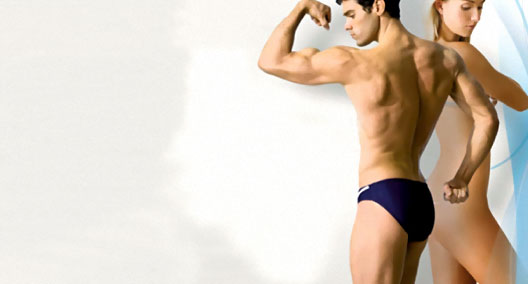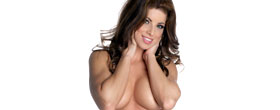Liposculpture & Fat Transfer

Liposculpture is a more refined method of removing body fat than liposuction. The instruments are smaller and the procedure is gentler, allowing for detailed body contouring that facilitates the best shape possible for any given individual. It is best done with tumescent anaesthesia using local anaesthetics which infiltrate only the parts of the body that require reshaping. Sedation is always given to enhance the comfort. You may be surprised at how painless the whole procedure is.
Though liposculpture is more time consuming, it allows the surgeon to achieve the best possible results. Liposculpture is a much more involved procedure than simple liposuction, requiring patience, a pair of keen eyes, the artistic flair of an artist and the hands of a sculptor. Add perfectionism to this list and you have an excellent liposculpture surgeon.
Liposculpture can be carried out on several areas at the same time. Indeed, for best results, and to allow the feathering of one area into the next, it may be recommended that several areas be done in the same procedure in some cases.
Liposculpture is appropriate for the following areas:
Chin, Arms, Breasts, Back, Waist, Hips, Abdomen, Knees, Ankles, Calves, Inner thighs, Outer thighs
Liposculpture FAQ
What is liposculpture?
Liposculpture is a more refined form of liposuction. The latter was originally conceived by Dr Georgiou Fischer of Rome and was later pioneered by Dr Pierre Fournier, a family doctor in Paris who is still practicing and lecturing.
Liposculpture removes fat deposits through thin metal tubes or cannulae using tiny entry incisions. Our doctors use a special syringe or a mechanical suction pump to create a negative pressure to suck out fat from the areas to be improved. The procedure is carried out under local anaesthesia, via the infusion of an anaesthetic solution under the skin (this is the tumescent technique). If required, and most often
it is, a sedative is given to enhance patient comfort.
What is Lipo filling (fat transfer)?
Lipo filling (fat transfer) is when fat is transferred from one area of the body to another. Fat can be removed from one site for immediate transfer to another (for
example, the face), or it can be removed during liposcupture and frozen for use
at a later date (up to six months). Fat tends to be reabsorbed to some degree,
so results achieved may or may not be satisfactory in the long term.
Why do people want liposculpture?
A variety of reasons
prompt liposculpture, the most significant of which is usually that the patient
has unwanted deposits of fat that will not go away in spite of exercise and
dieting (often genetically programmed to be in those particular areas).
Liposculpture helps to improve appearance, confidence and self esteem, and
aesthetic body proportions can be restored. Clothes may fit better also. In some
cases, people use liposculpture to kick start a lifestyle modification program
that includes a better diet and an exercise program.
How much fat can be removed?
There are limits to the amount of local anaesthetic that can be used safely in one operation. If large amounts of fat need to be removed, more than one session may be necessary. The removal of five liters of fat is considered to be the upper limit for tumescent liposculpture. However, for a heavier person, more can be removed in stages. Too much or too little fat can be removed, or it may be uneven, resulting in a minor contour defect such as rippling or dimpling. This can be corrected with a lesser operation to fine tune the result.
What results can I expect?
It is important to stress that liposculpture provides the best results when there are localized areas of excess fat or an imbalance of the distribution of fat; for example, a woman with a pear shape. It is only an adjunct in the fight against obesity since the beneficial effects of exercise and a sensible diet are required in any quest for substantial weight loss. Although fat can be removed from the abdominal wall, it may not result in that much desired 'flat tummy' if there is laxity of the abdominal muscles. Removing one or two inches of fat from the front of the stomach will not significantly decrease the protrusion in these cases, and, if desired, a hospital surgical procedure is required to repair the muscle laxity or separation.
Will I lose weight?
Because fat itself is light, there may be no significant loss of weight. But most times there is, more importantly, a great change in shape.
What happens to my skin?
Liposculpture does not completely tighten the skin in all areas or in all patients. It is best suited to people who are in good physical shape and have young skin qualities, more so in people under the age of 50. We have, however, treated many people much older with excellent results.
In a few cases of liposculpture of the lower abdomen, and especially where there is an overhang or fatty roll, excess skin can remain. After the liposculpture procedure, a relatively minor surgery may be needed to achieve a better cosmetic result.
Loose or wrinkled skin can also occur over the mid-abdomen above the umbilicus, or the inner thighs, the latter being particularly
the case if the patient desires the removal of as much fat as possible to relieve chafing. Patients who are overweight or in the older age group must be willing to accept a greater possibility of such contour irregularities and/or laxity of the skin in exchange for an improved appearance when clothed.
How is liposculpture performed?
A suitably qualified doctor and nurse are with the patient in the surgery. Areas to be treated are marked before the procedure. Clinical photographs of the area(s) will be taken for comparisons of before and after the procedure. As a rule, an oral tablet and intramuscular injection are given as a relaxant. A cannula may be put into an arm vein. The area to be treated is infused with the tumescent fluid (as explained earlier).
Once the area is numb, the fat will be sucked out using the required cannula. Patient vital signs are monitored throughout the procedure, particularly pulse and blood pressure. The patient will be required to move and change position to facilitate access to the areas being treated. Towards the end of the procedure, the patient will be required to stand up. Adjustments will be made. Thereafter, dressings will be applied and support garments
fitted. The patient is transferred to the recovery room and then home with a relative or caretaker.
How long will the procedure take?
Depending on the area and the size of the patient, the procedure can take from two to four hours.
What can I expect after the operation?
There will be some discomfort to varying degrees. Some patients cope without pain killers, others with Panadol. Some occasionally require stronger medication. This is left to your discretion. Pain relief will be dealt with at the time of the procedure.
During the first two days, excess fluid will discharge from tiny holes in the skin from the procedure. The fluid will be pinkish, but actual blood loss will be minimal. Absorbent pads are supplied to help deal with this leakage and a plastic sheet is provided to place on the mattress. Towels can help contain the fluid. Patients are encouraged to take it easy for the rest of the day, but may go for a short walk. They are not permitted to drive at all for 24 hours.
Most patients can return to work on the second day. By the end of the first week, most patients will feel quite comfortable. Any bruising or swelling of tissue will gradually subside over the next three weeks.
When can I resume my daily activities? Normal activities can be resumed the next day. More strenuous activities can be resumed in approximately two to four days, or as your doctor advises.
When will I see the results of my liposculpture?
In 48 hours you will see up to 70% of the final result. A month after the procedure, most patients look and feel completely recovered from the procedure.
It takes three months for the final result to be evident. Liposculpture to the calves and ankles requires a longer recovery period, with swelling of the ankles continuing for up to six months in some patients. Retraction of abdominal skin where excess fat has been removed will also show a slower recovery, taking up to six months.
What are the possible side effects of liposculpture?
The doctor cannot guarantee the results of any operation. The realistic aim is improvement, not perfection. We have found that, in fact, as many as 10% of our patients request further procedures in other areas. Initially, the benefits cannot be fully appreciated because of swelling and the ongoing healing process, especially in the abdomen. The final results may not be fully evident for up to six months. It should be noted that liposculpture does not tighten the skin in all areas nor in all patients. It is best suited for people who are in good physical shape and have young skin qualities. We have treated older people with excellent results, but people who are overweight or over the age of 50 should take into account their older skin qualities and must be willing to accept some contour irregularities or laxity of skin. Liposculpture is not a treatment for cellulite.
What are the possible complications of liposculpture?
Infection is a rare occurrence but will require appropriate antibiotics and possibly other treatment, including needle aspiration or a small drainage incision in the treated area. Allergic reactions can occur with any medications the doctor uses or prescribes. If any rashes or itches develop, especially on the palms of the hands or the soles of the feet, you must immediately notify our office or your family doctor, or attend the casualty ward at your nearest hospital. This is important because you may be suffering from a general reaction to the medication called anaphylaxis, which, if not treated, can be very serious. Blood collections in the area of the operation (hematoma) or watery fluid (seroma) occur infrequently, but could require removal (aspiration). Areas of skin loss (sloughing) have been reported. Fortunately, this is even more infrequent. Deep vein thrombosis is a rare but possible complication of any surgery. This is even less common when liposuction is performed under a local anaesthetic, and, indeed, with our new techniques which allow you to continue with your daily activities, it is, in fact, extremely rare. However, if any deep clots occur in your veins it can be very serious if they travel to your lungs (pulmonary emboli) and, occasionally, these occurrences can be fatal. Other serious complications such as fluid imbalance, fat embolism, perforations of viscera, or shock have been reported with a general anaesthetic or mega-liposuction. These procedures should be performed in a hospital.
The above information covers most, if not all, the benefits and possible complications of liposculpture. Should you still have any questions, please consult your doctor at The Ashbrooke for answers before making a decision to undertake the procedure. If you are well-informed about the alternatives, the benefits and risks, your expectations will become more realistic



